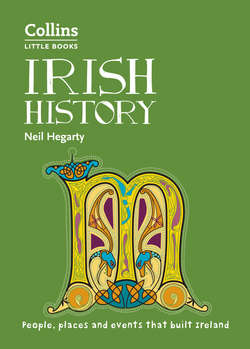Читать книгу Irish History: People, places and events that built Ireland - Neil Hegarty - Страница 26
Оглавление‘Heathen men’
The end of monastic Ireland’s glory days can be dated precisely to AD 795, when the monastery on the island of Rathlin was sacked by ferocious raiders who came over the sea. These were the Vikings – the Norsemen – and the first sighting of them in British waters had been two years previously, when their ships had appeared off the shores of the famous Northumbrian monastery at Holy Island, or Lindisfarne. Now these Vikings – as the Anglo-Saxon Chronicle gloomily put it, these ‘heathen men’ who came with ‘rapine and slaughter’ – were in Ireland, and their impact would be immediate, profound, and long-lasting. In the years after the Rathlin attack, coastal and island monasteries were attacked again and again, and their treasuries plundered. Iona came under assault in 802 and 806, and gradually many monasteries were abandoned, with communities moving inland to find safety. Such security, however, was not easily achieved: the light, shallow-draughted Viking ships could sail as easily on the rivers of Ireland as they could along its coasts. Soon Vikings were scouting the river Shannon and establishing bases on inland lakes. The great inland monastery at Clonmacnoise was torched in 835.
